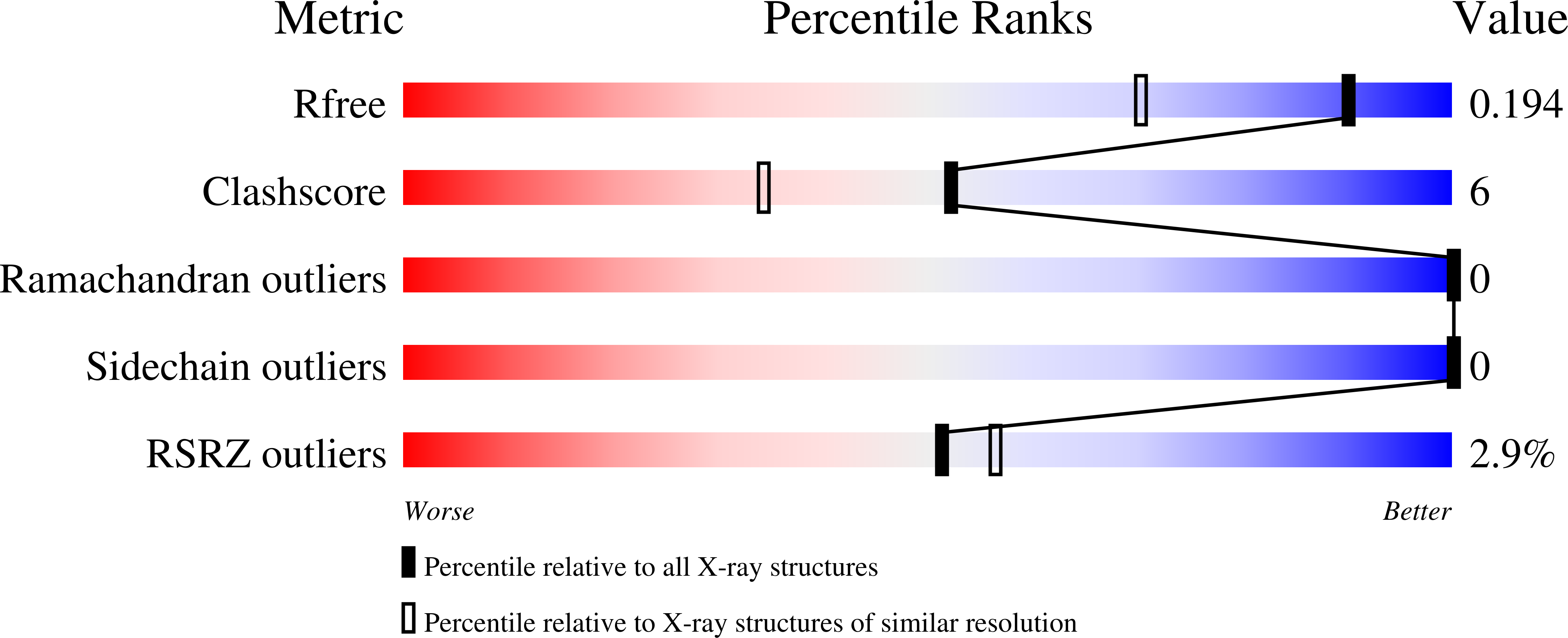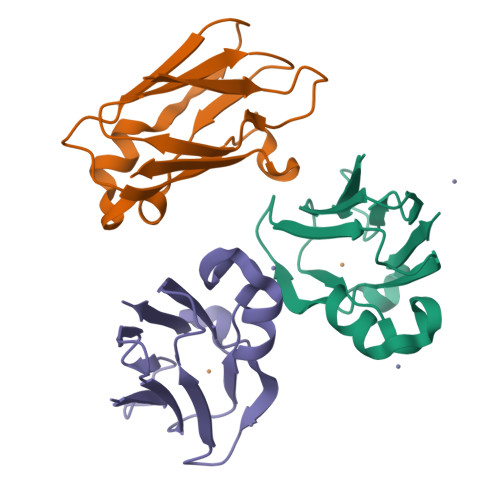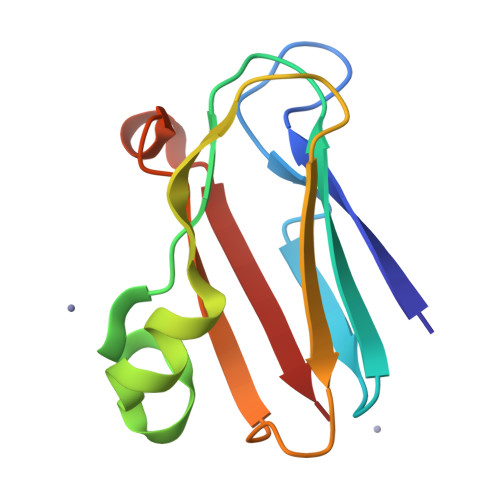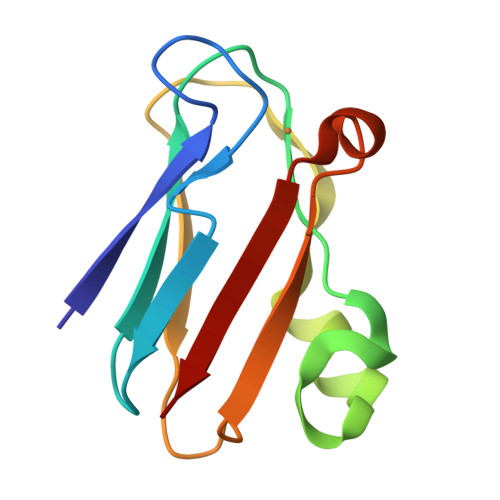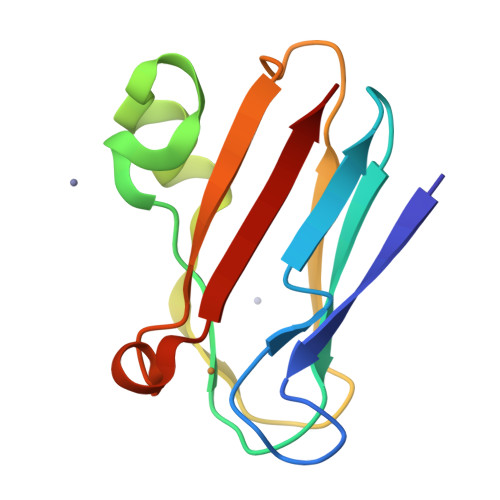Regulation of protein function: crystal packing interfaces and conformational dimerization.
Crowley, P.B., Matias, P.M., Mi, H., Firbank, S.J., Banfield, M.J., Dennison, C.(2008) Biochemistry 47: 6583-6589
- PubMed: 18479147
- DOI: https://doi.org/10.1021/bi800125h
- Primary Citation of Related Structures:
3CVB, 3CVC, 3CVD - PubMed Abstract:
The accepted view of interprotein electron transport involves molecules diffusing between donor and acceptor redox sites. An emerging alternative hypothesis is that efficient long-range electron transport can be achieved through proteins arranged in supramolecular assemblies. In this study, we have investigated the crystal packing interfaces in three crystal forms of plastocyanin, an integral component of the photosynthetic electron transport chain, and discuss their potential relevance to in vivo supramolecular assemblies. Symmetry-related protein chains within these crystals have Cu-Cu separations of <25 A, a distance that readily supports electron transfer. In one structure, the plastocyanin molecule exists in two forms in which a backbone displacement coupled with side chain rearrangements enables the modulation of protein-protein interfaces.
Organizational Affiliation:
UCD School of Biomolecular and Biomedical Science, Conway Institute, University College Dublin, Belfield, Dublin 4, Ireland. peter.crowley@ucd.ie







